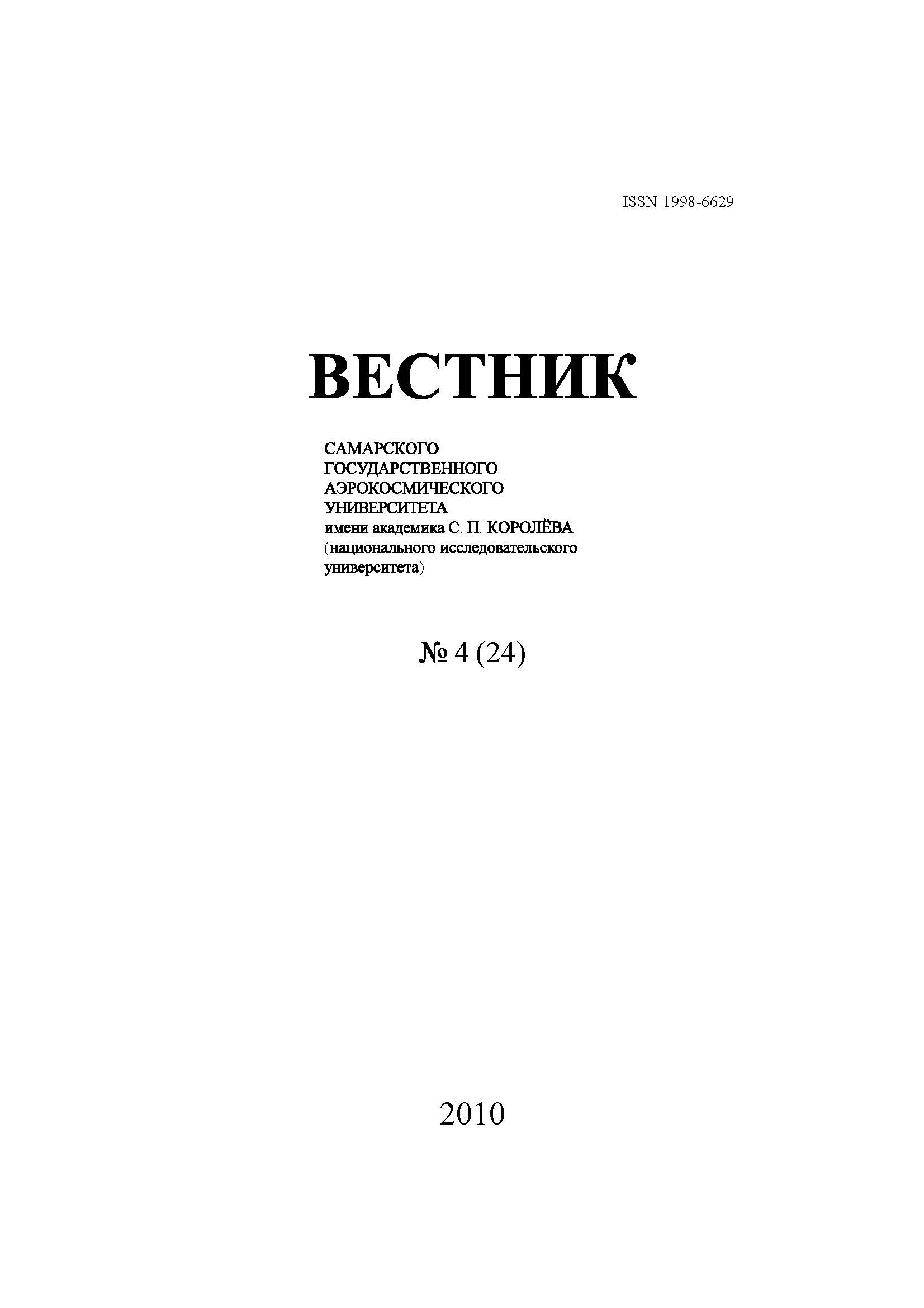Reduction of the focal spot size in high-aperture focusing systems at inserting of aberrations
- Authors: Pelevina E.A.1, Khonina S.N.2
-
Affiliations:
- Samara State Aerospace University
- Image Processing Systems Institute of RAS, Samara
- Issue: Vol 9, No 4 (2010)
- Pages: 257-268
- Section: CONTROL, COMPUTER SCIENCE AND INFORMATION SCIENCE
- URL: https://journals.ssau.ru/vestnik/article/view/967
- DOI: https://doi.org/10.18287/2541-7533-2010-0-4(24)-257-268
- ID: 967
Cite item
Full Text
Abstract
Possibility of control by the contribution of components of vector electric field in focal area by means of transmission functions similar to the wavefront aberration for the purpose of reduction of the cross-section size of the central light spot of focusing system with the high numerical aperture is shown. By analysis of a matrix of polarizing transformation of a high-aperture lens and numerical modeling of focusing system in Debay approach the possibility of reducing the size of the focal spot and shadow area is proved. Efficiency of use Zernike polynomials for formation of a subwavelength central spot is shown: elongate focal spot having full width at half maximum along polarization axis FWHM(-)=0.24λ is obtained for linearly polarized beam; round focal spot having full width at half maximum FWHM=0.32λ is obtained for radially polarized beam and FWHM=0.35λ for circularly polarized beam. For the azimuthal polarization the presence of the first order vortex phase function enables us to obtain the central circular spot in the total intensity. The spot is smaller than the diffraction limit: FWHM=0.46λ and the intensity in the sidelobes is low.
About the authors
E. A. Pelevina
Samara State Aerospace University
Author for correspondence.
Email: yekaterina.pelevina@gmail.com
Student
Russian FederationS. N. Khonina
Image Processing Systems Institute of RAS, Samara
Email: khonina@smr.ru
Doctor of Physical and Mathematical Sciences, Professor
Leading Researcher
Russian FederationReferences
- Quabis, S. Focusing light to a tighter spot // Opt. Commun. - 2000. - Vol. 179. - P. 1-7.
- Dorn, R. Sharper focus for a radially polarized light beam // Phys. Rev. Lett. - 2003. - Vol. 91. - P. 233901.
- Sheppard, C.J.R. Annular pupils, radial polarization, and superresolution / Colin J. R. Sheppard and Amarjyoti Choudhury // Appl. Opt. - 2004. - Vol. 43, Issue 22. - P. 4322-4327.
- Khonina, S.N. Investigation of axicon application in high-aperture focusing system / S.N. Khonina, S.G. Volotovsky // Computer Optics. – 2010. – Vol. 34, N1. – P. 35-51. – [in Russian].
- Khonina, S.N. Control by contribution of components of vector electric field in focus of a high-aperture lens by means of binary phase structures / S.N. Khonina, S.G. Volotovsky // Computer Optics. – 2010. – Vol. 34, N 1. – P. 58-68. – [in Russian].
- Visser, T.D. Spherical aberration and the electromagnetic field in highaperture systems / T.D. Visser, S.H. Wiersma // J. Opt. Soc. Am. A. - 1991. -Vol. 8, N 9. - P. 1404-1410.
- Visser, T.D. Diffraction of converging electromagnetic waves / T.D. Visser, S.H. Wiersma // J. Opt. Soc. Am. A. - 1992. - Vol. 9, N 11. - P. 2034-2047.
- Braat, J.J.M. Extended Nijboer–Zernike approach to aberration and birefringence retrieval in a high-numerical-aperture optical system / J.J.M. Braat, P. Dirksen, A.J.E.M. Janssen , S. van Haver, A.S. van de Nes // Opt. Soc. Am. A. - 2005. - Vol. 22, N 12. - P. 2635-2650.
- Braat, J.J.M. Energy and momentum flux in a high-numerical-aperture beam using the extended Nijboer-Zernike diffraction formalism / J.J.M. Braat, S. van Haver, A.J.E.M. Janssen, P. Dirksen // Journal of the European Optical Society. - 2007. - Rapid Publications 2. 07032. - P. 1-13.
- Rao, R. Field confinement with aberration correction for solid immersion lens based fluorescence correlation spectroscopy / R. Rao, J. Mitic, A. Serov, R.A. Leitgeb, T. Lasser // Optics Communications. - 2007. – Vol. 271. - P. 462–469.
- Singh, R.K. Effect of primary spherical aberration on high-numericalaperture focusing of a Laguerre-Gaussian beam / R.K. Singh, P. Senthilkumaran, K. Singh // J. Opt. Soc. Am. A. - 2008. - Vol. 25, N 6. - P. 1307-1318.
- Singh, R.K. Tight focusing of vortex beams in presence of primary astigmatism / R.K. Singh, P. Senthilkumaran, K. Singh // J. Opt. Soc. Am. A. - 2009. - Vol. 26, N 3. - P. 576-588.
- Singh, R.K. Focusing of linearly-, and circularly polarized Gaussian background vortex beams by a high numerical aperture system afflicted with third-order astigmatism / R.K. Singh, P. Senthilkumaran, K. Singh // Optics Communications. - 2008. – Vol. 281. - P. 5939–5948.
- Singh, R.K. Structure of a tightly focused vortex beam in the presence of primary coma / R.K. Singh, P. Senthilkumaran, K. Singh // Optics Communications. - 2009. – Vol. 282. - P. 1501–1510.
- Born, M. Principlies of Optics / M. Born, E. Wolf - Pergamon Press, Oxford, 1968.
- Sheppard, C.J.R. Orthogonal aberration functions for high-aperture optical systems / Colin J.R. Sheppard // J. Opt. Soc. Am. A. - 2004. - Vol. 21, N 5. - P. 832-838.
- Richards, B. Electromagnetic diffraction in optical systems. II. Structure of the image field in an aplanatic system / B. Richards and E. Wolf // Proc. R. Soc. London Ser. A. - 1959. - Vol. 253. - P. 358–379.
- Khonina, S.N. Possibility analysis of subwavelength light localization and focus extending for high-aperture focusing system using vortical phase transmission function / S.N. Khonina, S.G. Volotovsky // Electromagnetic waves and electronic systems. - 2010. - N 11. - P. 6-25. – [in Russian].
- Grosjean, T. Photopolymers as vectorial sensors of the electric field / T. Grosjean and D. Courjon // Optics Express. - 2006. - Vol. 14, Issue 6. - P. 2203-2210.
Supplementary files





















